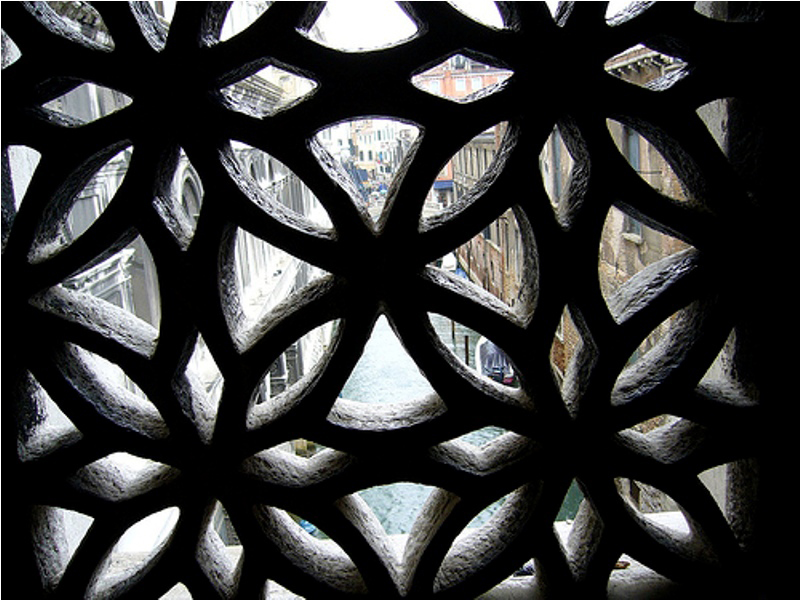Ponti d’Italia – 1. Il Ponte dei Sospiri Posted by Serena on Feb 3, 2012 in Uncategorized
Il Ponte dei Sospiri (The Bridge of Sighs) is one of the most famous of the roughly 400 bridges which span i canali di Venezia (Venice’s canals). Designed by the Swiss-Italian sculptor and architect Antonio Contino, il Ponte dei Sospiri was constructed at the beginning of the seventeenth century in order to span the Rio di Palazzo and connect le Prigioni Nuove (the New Prisons) with il Palazzo Ducale, in which were located gli uffici degli Inquisitori di Stato (the offices of the State Inquisitors).
Internally, the bridge consists of due stretti corridoi affiancati (two narrow parallel corridors), one of which leads to the Quarantia Criminale and the rooms of the tribunal, and the other to the Avogadoria (lawyers’ offices). It was traditionally believed that prisoners crossing the bridge to begin their incarceration would take what would probably be their last glimpse of the outside world and utter a sigh of sadness. Unfortunately this romantic notion is contradicted by the fact that the view from the stone grilled windows of the bridge is very restricted (see photo below), but it’s a lovely legend none the less, as is the local belief that due persone che si amano avranno la felicità eterna se si baciano al tramonto su una gondola sotto il Ponte dei Sospiri (two people that love each other will have eternal happiness if they kiss in a gondola under the Bridge of Sighs at sunset).
The bridge takes its name from the poet Lord Byron’s lengthy narrative Childe Harold’s Pilgrimage, published between 1812 and 1818 and dedicated to “Ianthe”, the nickname of the poet’s intimate friend, Lady Charlotte Harley. Childe Harold’s Pilgrimage describes the travels and reflections of a world-weary young man who, disillusioned with a life of pleasure and revelry, looks for distraction in foreign lands. The poem, which is divided into four cantos, is believed to be a vehicle for Byron’s personal beliefs and ideas. It is in the fourth canto that Byron wrote the lines: “I stood in Venice on the Bridge of Sighs, a palace and prison on each hand”.
Le Prigioni Nuove, which were probably the first purpose built prisons in Europe, lists amongst their most illustrious ‘guests’ Giacomo Casanova, the famous Italian adventurer, author and womaniser, whose name is still synonymous with seduction. At the age of thirty Casanova was arrested and sentenced to five years imprisonment for the crime of blasphemy. He was incarcerated in i Piombi (The Leads), the name given to the infamous cells under the lead roof of the prisons which became an oven in the summer and a freezer in the winter. Casanova, however, had other ideas, and set about devising an escape plan. His first attempt was ruined by an unexpected change of accommodation, but Casanova regained his determination and eventually escaped through the lead roof with the help of another prisoner, a renegade priest called Father Balbi. Thirty years later, Casanova recounted the tale of his escape from the Prigioni Nuove in his book ‘Story of my Flight’.

Build vocabulary, practice pronunciation, and more with Transparent Language Online. Available anytime, anywhere, on any device.






Comments:
jore:
very informative must read byron
Nastaran:
è bello sapere queste cose su di Italia.
Grazie tante per le informazioni.
buona giornata…
Serena:
@Nastaran Buona giornata anche a te Nastaran.
Serena